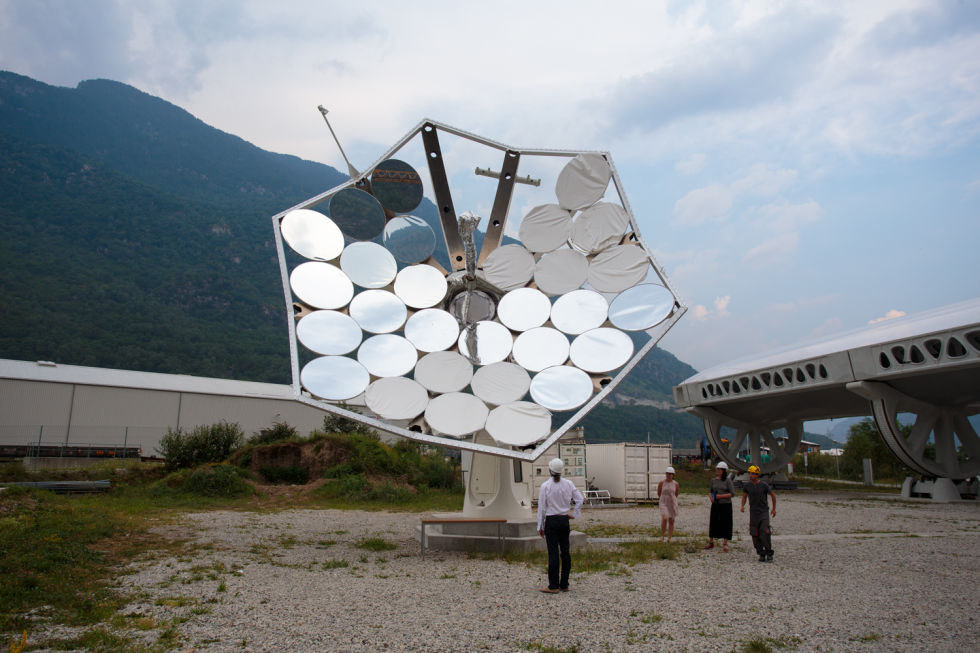The Solar Sunflower: Harnessing the power of 5,000 suns
Ars Technica » Scientific Method 2015-08-30
Sebastian Anthony
Behold, the Solar Sunflower! Here they are trying a bunch of different reflector materials, which is why the segments all look slightly different. Some of the reflectors are covered up to protect them from the elements, or to stop them from frying a nearby engineer.
24 more images in gallery
The Solar Sunflower, a Swiss invention developed by Airlight Energy, Dsolar (a subsidiary of Airlight), and IBM Research in Zurich, uses something called HCPVT to generate electricity and hot water from solar power. HCPVT is a clumsy acronym that stands for "highly efficient concentrated photovoltaic/thermal." In short, it has reflectors that concentrate the sun—"to about 5,000 suns," Gianluca Ambrosetti, Airlight's head of research told me—and then some highly efficient photovoltaic cells that are capable of converting that concentrated solar energy into electricity, without melting in the process. Airlight/Dsolar are behind the Sunflower's reflectors and superstructure, and the photovoltaics are provided by IBM.
The two constituent technologies of the Solar Sunflower—concentrated solar thermal power and photovoltaic solar power—are both very well known and understood at this point, and not at all exciting. What's special about the Sunflower, however, is that it combines both of the technologies together in a novel fashion to attain much higher total efficiency. Bear with me, as this will take a little bit of explaining.
Read 17 remaining paragraphs | Comments
